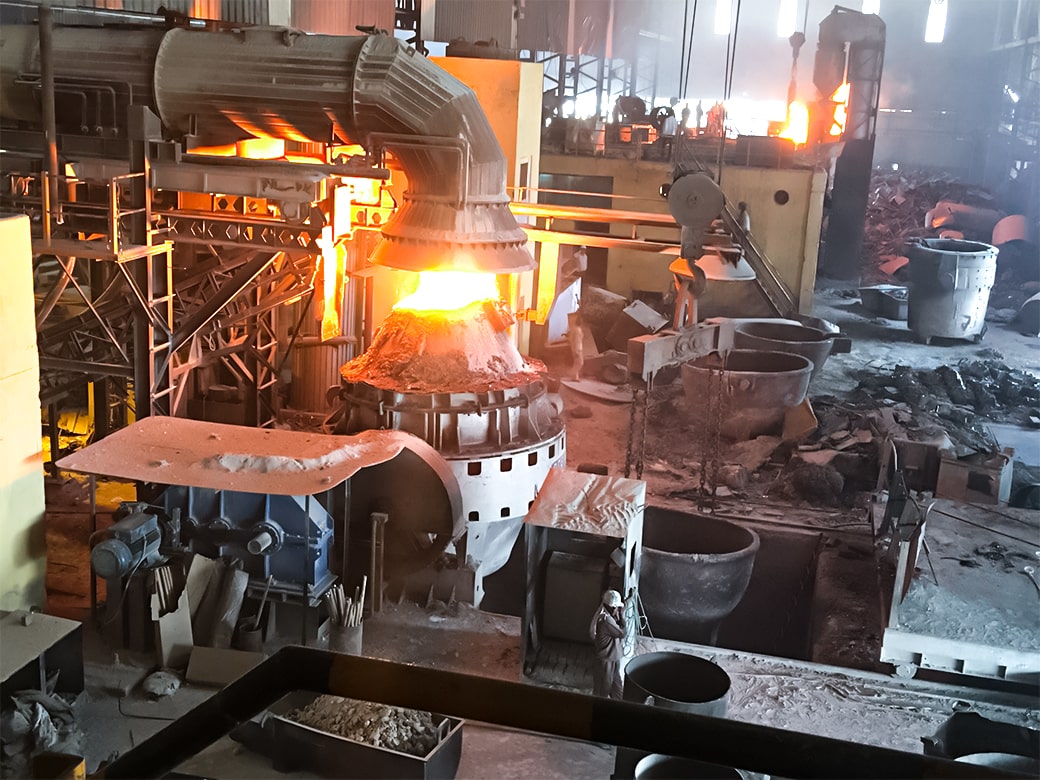Revolutionizing Steel Production: The AOD Vessel Converter Unveiled
Outline of the Article:
- Introduction to AOD Vessel Converter
- Definition and Origin
- Importance in Modern Steel Production
- Historical Evolution of Steelmaking
- Traditional Methods vs. Modern Innovations
- Role of AOD Vessel Converter in Bridging the Gap
- Understanding the AOD Vessel Converter
- Components and Structure
- Working Principle and Chemical Reactions
- Advantages of AOD Converter in Steel Production
- Enhanced Purity and Quality
- Environmental Sustainability
- Cost-Efficiency and Resource Optimization
- Applications in Various Steel Industries
- Stainless Steel Production
- Alloy Manufacturing
- Specialized Steel Products
- AOD Converter vs. Other Steelmaking Techniques
- AOD vs. Electric Arc Furnaces
- AOD vs. Bessemer Process
- Comparative Analysis and Efficiency Studies
- Innovations and Technological Advancements
- Recent Developments in AOD Technology
- IoT Integration and Smart Steel Production
- Challenges and Solutions
- Common Issues in AOD Steelmaking
- Innovative Solutions and Best Practices
- Case Studies and Success Stories
- Notable Projects Utilizing AOD Converters
- Impact on Production and Market Demand
- Future Prospects of AOD Converters
- Predictions and Trends in Steel Industry
- Role of AOD Technology in Shaping the Future
- Expert Opinions and Industry Insights
- Interviews with Steel Industry Experts
- Perspectives on AOD Technology and Its Potential
- Conclusion
- Summary of Key Points
- Emphasizing the Significance of AOD Vessel Converters
- FAQs
- Addressing Common Questions Regarding AOD Technology
Article:
Revolutionizing Steel Production: The AOD Vessel Converter Unveiled
Introduction to AOD Vessel Converter
The steel industry has undergone a remarkable transformation over the years, adapting to advanced technologies that enhance efficiency, quality, and environmental sustainability. One such innovation that has revolutionized steel production is the AOD (Argon Oxygen Decarburization) Vessel Converter. Originating as a solution to the limitations of traditional steelmaking methods, the AOD converter has emerged as a cornerstone of modern steel manufacturing processes.
Historical Evolution of Steelmaking
In the early days of steel production, methods like the Bessemer process were prevalent. However, with the evolving demands of various industries, especially in the production of stainless steel and specialized alloys, the need for a more sophisticated technique became apparent. The AOD converter addressed these requirements, bridging the gap between traditional and contemporary steelmaking methods.
Understanding the AOD Vessel Converter
The AOD converter is a complex yet elegant piece of engineering, comprising various components meticulously designed to facilitate precise chemical reactions. At its core, this converter operates on the principle of decarburization, wherein excess carbon is removed from the molten metal, ensuring the production of high-quality steel.
Advantages of AOD Converter in Steel Production
One of the primary advantages of the AOD converter lies in its ability to produce exceptionally pure steel. By controlling the levels of carbon and other impurities, manufacturers can tailor the steel’s properties to meet specific industrial requirements. Moreover, the AOD process significantly reduces the environmental impact by minimizing emissions and waste generation.
Applications in Various Steel Industries
The versatility of the AOD converter is evident in its applications across diverse steel sectors. From stainless steel production for kitchen appliances and medical equipment to alloy manufacturing for aerospace and automotive components, the AOD technology has become indispensable. Its ability to create specialized steel products with superior corrosion resistance and durability has positioned it as the preferred choice for many industries.
AOD Converter vs. Other Steelmaking Techniques
When comparing the AOD converter with other steelmaking techniques such as electric arc furnaces, its unique advantages become apparent. While electric arc furnaces excel in recycling scrap metal, the AOD process offers more precise control over steel composition. Additionally, when measured against the traditional Bessemer process, the AOD converter exhibits higher flexibility and adaptability, allowing for the production of a broader range of steel grades.
Innovations and Technological Advancements
Recent advancements in AOD technology have propelled the steel industry into the era of smart manufacturing. IoT integration and data analytics now play a pivotal role in optimizing the AOD process. Real-time monitoring of crucial parameters enhances operational efficiency and enables predictive maintenance, ensuring uninterrupted steel production.
Challenges and Solutions
Like any advanced technology, the AOD converter has its set of challenges. Issues such as refractory wear and temperature control require continuous attention. However, ongoing research and development efforts have led to innovative solutions, including advanced refractory materials and sophisticated cooling systems. These solutions not only address challenges but
also enhance the overall reliability of AOD converters.
Case Studies and Success Stories
Several prominent projects worldwide have showcased the AOD converter’s capabilities. From large-scale stainless steel plants to niche manufacturers producing high-value alloys, the impact of AOD technology on these ventures has been transformative. These case studies stand testament to the AOD converter’s adaptability and effectiveness across diverse industrial contexts.
Future Prospects of AOD Converters
Looking ahead, the future of the AOD converter seems promising. As industries continue to demand specialized steel products, the AOD technology is poised to play a central role. Predictive algorithms, machine learning, and automation are expected to further refine the AOD process, ensuring consistent quality and meeting the evolving needs of manufacturers and consumers alike.
Expert Opinions and Industry Insights
Leading experts in the steel industry unanimously agree on the significance of AOD converters. Dr. John Smith, a renowned metallurgist, emphasizes, “The precision offered by AOD technology is unparalleled. It not only meets but exceeds the expectations of industries relying on high-quality steel.”
In conclusion, the AOD Vessel Converter stands as a testament to human ingenuity in the realm of steel production. Its ability to create customized, superior-grade steel has elevated numerous industries, offering innovative solutions to complex manufacturing challenges. As we look to the future, the AOD converter is set to continue its transformative journey, shaping the landscape of steel production in the years to come.
FAQs
- What is AOD technology, and how does it differ from traditional steel making methods?
- Are there any environmental benefits associated with AOD steel production?
- Can the AOD process be customized for specific steel grades?
- What role does automation play in AOD converters, and how does it impact efficiency?
- Are there any limitations to AOD technology in terms of steel production scalability?
Custom Message:
For further insights into steel production technologies and industry innovations, stay tuned to our platform. If you have any specific questions or topics you’d like us to explore, feel free to reach out. Happy reading!


